When it comes to raised garden beds, one of the most important decisions you’ll make is how deep to make them. Too shallow, and you won’t be able to grow many plants; too deep, and you’ll wind up spending a lot of time and energy filling them up with soil. So, what’s the ideal depth for your raised garden bed? This article will take a look at some factors to consider when making your decision.
The benefits of raised beds in your garden
Raised beds offer numerous advantages to gardeners. They provide better drainage, more control over soil content and temperature, less compacted soil and fewer weeds, improved access to the garden, and they lessen the need for physical labor in maintaining your plants.
Raised beds can also help reduce water loss from evaporation since they are higher than other parts of your garden. This means your plants will get more consistent moisture as you won’t have to worry about water running off that part of your garden.
Raised beds also make harvesting easier, as you can access plants from all sides without having to walk through your garden. This removes the risk of damaging other plants and soil compaction from too much foot traffic. Finally, raised beds can provide a visually appealing look to your landscape by adding texture, height, and color.
Overall, raised beds offer many benefits to gardeners that go beyond simply producing more bountiful harvests. They are an essential part of successfully creating a sustainable and thriving garden environment. Whether you’re looking for improved drainage or just an aesthetically pleasing addition to your yard, raised beds are a great gardening technique that you should consider [1].
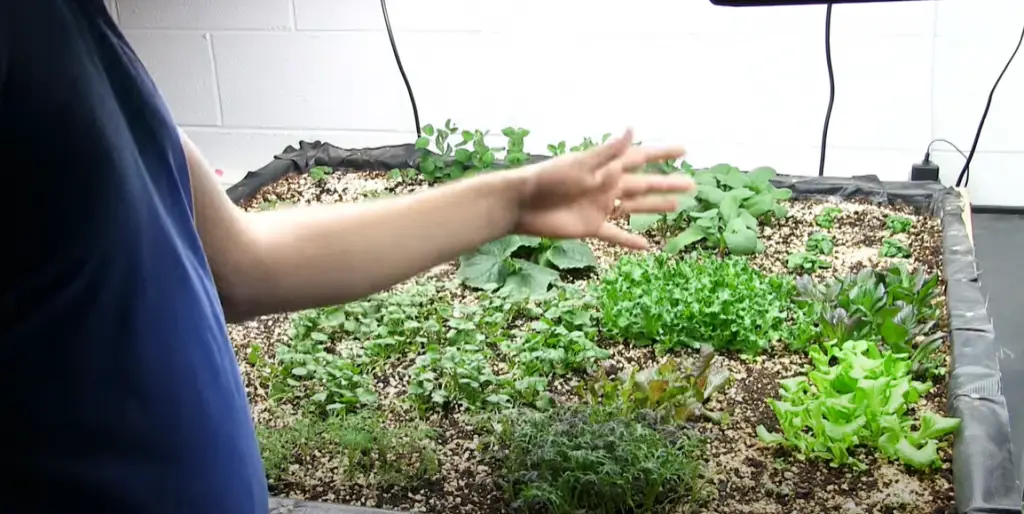
Types of garden soil that are best for raised garden beds
Raised garden beds can be a great way to grow vegetables, herbs, and other plants in your backyard. But for your raised garden bed to thrive, it’s important to choose the right type of soil. Here are some of the best types of garden soil for raised garden beds:
- Compost-Rich Soil – Compost is full of beneficial nutrients that help plants grow healthy and strong. Building up a layer of compost-rich soil at the bottom of your raised garden bed will give your plants plenty of nutrition and moisture.
- Peat Moss – Peat moss helps retain water and nutrients very well, making it ideal for growing plants in a raised bed. You can also add perlite and/or compost to peat moss to create a more fertile soil mixture.
- Sand-Based Soil – A combination of sand, compost, and topsoil can make for excellent raised garden bed soil. The sand helps promote drainage while the other ingredients provide plenty of nutrients for your plants.
- Potting Soil – Another option is to mix potting soil with some compost, bark chips, or perlite for added drainage and nutrition. This will help ensure that your plants are getting all the nutrients they need to thrive.
No matter what type of soil you choose, it’s important to keep in mind that raised garden beds require well-draining soil. By using the right type of soil and making sure your raised bed has adequate drainage, you can give your plants the best opportunity to flourish.
Why does raised-bed depth matter?
The depth of the raised bed is important for several reasons. First, it affects the amount of soil and nutrients available for the plants to access. A deeper raised bed means more room for healthy root growth and an increased ability to retain moisture in the soil. This can be particularly beneficial during dry seasons when water can quickly evaporate from shallow soils.
Second, a deeper raised bed helps promote better drainage by providing space for excess water to flow away from the roots of your plants. Additionally, a deeper bed provides insulation against extreme temperatures which can protect your crops from frost damage or intense heat waves.
In summary, the depth of your raised bed is an important factor to consider when planning your garden. By choosing the right depth for your raised bed, you can maximize the benefits it will offer your plants and create a thriving garden with minimal effort [2].
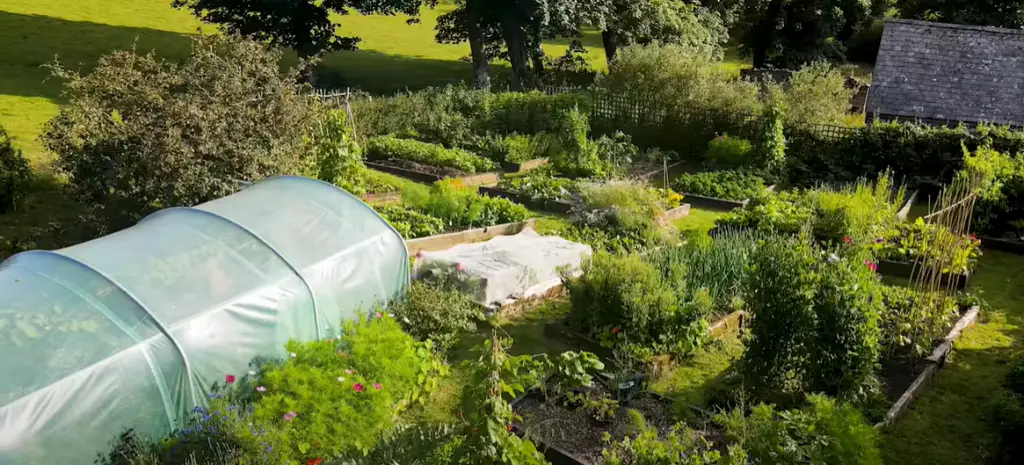
How Deep to Make Raised Garden Beds?
Location of Your Raised Garden Bed
When planning the depth of your raised garden bed, you’ll also want to consider where it will be located. If your raised garden bed is going to be located in an area that receives plenty of sunlight, then you may want to create a deeper bed so that plants can take advantage of the longer growing season and additional nutrients available with deeper soil. On the other hand, if your garden bed will be located in an area with limited sun exposure, then you may only need a shallow bed for smaller plants or crops that don’t require as much root space.
Soil Composition
The type of soil you choose for your raised garden beds can affect how deep they should be. For example, if the soil is loose and easily worked, it may not require as deep of a bed. On the other hand, heavier soils with more clay content will benefit from deeper beds because they can better hold moisture and nutrients. It is also important to consider the pH of your soil when deciding how deep to make raised garden beds; acidic soils (those with a lower pH) should be built higher than neutral or alkaline soils, which don’t need as much depth.
Plants You Plan To Grow
The types of plants you plan on growing in your raised garden beds will help determine the ideal depth for your soil. Some vegetables and flowers may prefer shallow beds where their roots have access to oxygenated air. Other vegetables and herbs may thrive in deeper beds, as their roots can extend further into the soil to take advantage of additional nutrients and moisture. Some plants may even prefer raised beds that are set above ground level in order to avoid excessive moisture and pests.
Size of Your Garden Bed
The size of your raised garden bed is also an important factor when determining the ideal depth. Smaller beds may not require as much soil, while larger ones will need more depth to support a greater variety of plants. Additionally, large beds that are more than 12 inches deep may benefit from being divided into sections with different depths depending on what plants you plan on growing in each area.
Drainage Considerations
Finally, you’ll want to consider drainage when determining how deep to build your raised garden beds. If there is poor drainage in the area, then a deeper bed can help prevent water from pooling at the bottom and drowning roots. Conversely, if there is good drainage in the area then a shallow bed may suffice as long as it has adequate soil amendments for moisture retention [3].
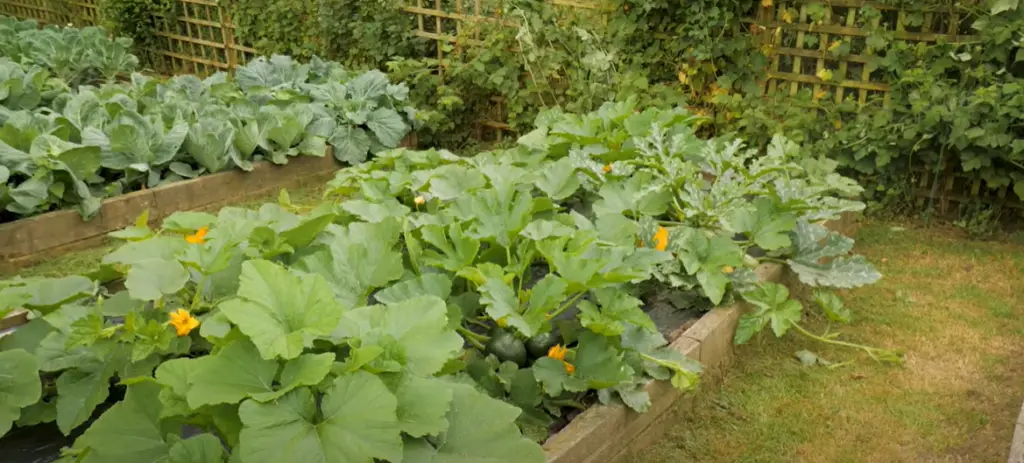
What to Use to Build a Raised Garden Bed?
Building a raised garden bed does not require special materials, but certain materials work better than others for this landscaping project. Pressure-treated lumber is one of the best materials to use because it resists rot and insects and can withstand outdoor conditions. Cedar is also a popular choice because it naturally resists rot, although it may be more expensive than pressure-treated lumber. Both types of wood should be sealed with a water-resistant sealant or paint to prolong their life.
Another material that works well for raised garden beds is recycled plastic composite lumber. This type of material looks like wood but is made from recycled plastic materials, making it an eco-friendly option. It’s also very durable and resistant to rot and insects.
Finally, brick and stone can also be used to construct raised garden beds. While these materials may require a bit more work during the construction process, they are highly durable and will last for many years. And since they won’t rot or decay, you don’t need to worry about sealants or other treatments to keep them looking good.
No matter what material you choose for your raised garden bed, make sure it is appropriate for the climate in which it will be placed. Your local gardening store should have materials available that are suitable for your area’s weather conditions. By using the right type of material and taking proper care of it, you can enjoy a beautiful backyard oasis with minimal maintenance [4].
How to Build a Raised Garden Bed?
Building a raised garden bed is an attractive and productive way to grow vegetables, herbs, and flowers. It can also be used to create a small pond or rock garden in your backyard. Raised beds are generally easier to maintain than traditional gardens because they allow for better drainage and soil quality control. Plus, they’re more aesthetically pleasing than simple rows of dirt!
Here is how to build a raised garden bed:
- Choose the location for your raised bed – Make sure there is ample sunlight (6-8 hours per day) and easy access for watering and harvesting plants. Also, consider where you want to place pathways around the bed so that it’s easy to get in and out of it.
- Determine the size and shape of your bed – Consider how much space you need to accommodate all of your plants, as well as pathways around it. You can make a basic rectangular or square-shaped bed, or get creative with curves or ovals!
- Gather construction materials – To build a raised garden bed, you’ll need soil, compost, fertilizer, wooden boards (for the sides), and screws (or nails). Additionally, you may want to purchase mesh netting to line the bottom and keep out pests like gophers or moles.
- Assemble the frame – Once you have all the necessary materials in place, begin by screwing together the wooden boards to form the frame. Make sure to measure and cut the boards accurately so that the edges fit snugly together.
- Line the bottom with mesh netting – To keep out pests, line the bottom of the bed with a layer of mesh netting before filling it in with soil. This will also help improve drainage since excess water will be able to seep through more easily.
- Fill in with soil and compost – Once you’ve secured your frame and laid down a layer of mesh netting, begin adding layers of soil and compost until it reaches about two inches below the top edge of your frame. You can find specific instructions for how much soil or compost to use depending on what type of plants you’ll be growing.
- Add fertilizer – To ensure a healthy, nutrient-rich environment for your plants, add a few handfuls of fertilizer on top of the soil and mix it in thoroughly before planting.
- Plant your seeds or transplants – Now that your raised garden bed is ready to go, you can begin planting whatever types of vegetables or flowers you’d like! Make sure to follow all instructions for proper spacing and care requirements for each plant species.
- Water regularly and keep the bed free of weeds – Don’t forget to water your plants regularly and make sure they have enough nutrients throughout their growing season. Additionally, keep an eye out for any weeds that may grow in the bed and remove them promptly to prevent overcrowding.
Building a raised garden bed is an easy and satisfying project that will allow you to enjoy your favorite plants all year long! With these simple steps, you can create a beautiful and productive space for growing vegetables, flowers, or herbs.

What to Put on the Bottom of a Raised Garden Bed?
When it comes to the bottom of a raised garden bed, it’s important to choose materials that will provide good drainage while also retaining soil moisture. One common choice is landscape fabric, which prevents weeds from growing up through the bed and allows air and water to penetrate. You can also use gravel or small stones for drainage in combination with landscape fabric, or opt for wooden boards laid horizontally.
Finally, if you want to create an attractive look, consider lining the bottom of your bed with brick or stone pavers. No matter what material you choose, make sure there are adequate gaps between them so that water can easily drain away without pooling at the base of the raised garden bed.
With the right combination of materials at the bottom of your raised garden bed, you can create an attractive and productive space for gardening. For more detailed advice on choosing materials for your raised bed bottom, it’s best to consult with a local expert or gardening store. They can provide valuable information to help you make the most out of your new planting area!
Common sizes of raised garden beds for vegetables
Raised garden beds for vegetables come in a variety of shapes and sizes. Generally, raised beds should be at least six inches deep to give your plants enough space to grow. Here are some common sizes of raised garden beds:
2 feet by 4 feet: This is a great size for small spaces or if you have limited mobility. With this size bed, you can plant 8-10 vegetable plants comfortably without overcrowding them. The depth of the bed should be 6-8 inches.
4 feet by 8 feet: This is a great size for larger gardens or those with more space to work with. With this size of the garden bed, you can comfortably plant 15-20 vegetable plants without overcrowding them. The depth of the bed should be 8-10 inches.
8 feet by 11 feet: This is an ideal size for large gardens where you need extra growing space. You can easily fit around 30-40 vegetable plants in this sized bed and the depth should be 12-14 inches.
No matter what size you choose for your raised garden bed, it’s important to make sure the soil is well-drained and nutrient-rich. This will ensure that your plants have the best chance of thriving in their new environment. Additionally, be sure to check with local regulations before starting any gardening project, as some areas may have restrictions on how high you can build a raised garden bed.

What can you plant in a raised garden bed?
Raised garden beds offer a variety of planting options. Depending on the size and shape of your bed, you can plant a mix of vegetables, fruits, flowers, herbs, and other plants that are appropriate for your climate.
Vegetables that do well in raised beds include tomatoes, peppers, leafy greens like lettuce and kale, root vegetables like carrots and beets, cucumbers, squash, eggplants, and beans. Fruits such as strawberries, blueberries, and raspberries also grow well in raised beds.
Herbs are some of the most popular plants for raised beds because they require little space to thrive. Popular herbs to plant in raised beds include basil, oregano, thyme, rosemary, parsley, and chives. Flowers like marigolds and nasturtiums deter pests from the garden, while vining plants like beans or cucumbers can be grown up a trellis for easy harvesting.
No matter what type of plants you choose to grow in your raised bed, make sure that they are suitable for your climate and spaced appropriately so that they can reach their full potential. With a bit of planning and care, you can create a thriving garden in your raised bed!
FAQ
Is 12-inch depth enough for a raised bed?
Yes, 12 inches is generally enough for most types of raised beds. Depth can vary depending on what type of plants and soil you are using in the bed, but 12 inches should provide sufficient root depth for vegetables, flowers, and other plants. Additionally, if you plan to add compost or fertilizer to your soil in the future, it’s best to have a deeper bed as this will create a larger reservoir for those nutrients. Ultimately, the depth you choose should depend on the specific needs of your plants and soil requirements.
What is the optimal size for a raised bed?
The perfect size for a raised bed depends on how much space you have available and what types of plants and crops you want to grow. If you’re growing vegetables, you’ll want to make sure your bed is wide enough for the plants and leaves to spread out. If you’re planting a flower garden, then a smaller size will work well. Generally speaking, raised beds should be at least 6 inches high but can range from 4-24 inches or more depending on what type of soil or plants are being used.
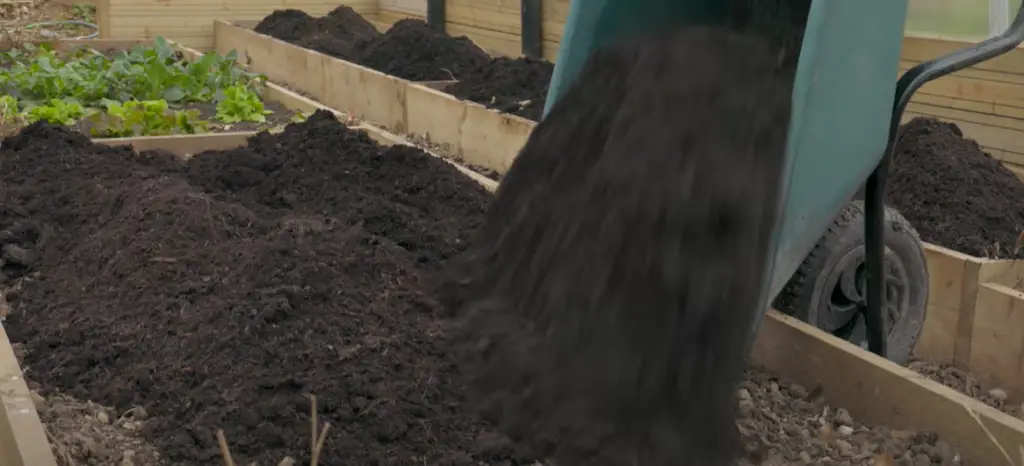
What materials can be used to construct a raised bed?
Raised beds can be constructed with many different materials such as wood, metal, stone, brick, and even plastic. Each material has its advantages and disadvantages so it’s important to choose one that works best for your needs. Wood is the most popular choice since it’s relatively inexpensive and easy to work with, but it does require regular maintenance to keep it in good condition.
Metal is a great option if you’re looking for a longer-lasting material that can withstand the elements, while brick and stone provide an elegant look and are built to last. Finally, plastic raised beds are becoming increasingly popular due to their affordability and ease of setup. No matter which type of material you choose, make sure you create a level base so your plants will be able to thrive. Additionally, make sure all corners are rounded off as sharp edges may harm both humans and animals that come into contact with them.
What can I grow in my raised bed?
Raised beds can be used for growing just about any type of plant or crop, from vegetables and herbs to flowers and trees. When designing your bed, consider the type of soil you will be using and how much sun exposure your plants will get to ensure they thrive. Additionally, make sure to keep companion planting in mind as this can help improve crop yield as well as provide beneficial habitat for pollinators.
What is the best way to water my raised bed?
When it comes to watering your raised bed, there are several different approaches to choose from. The traditional method uses a hose or sprinkler system connected directly to the tap which works great for larger beds. For smaller beds, an oscillating sprinkler or even a watering jar can be used to deliver water directly to the soil. Additionally, using a drip irrigation system is a great way to conserve water and ensure your plants get the amount of moisture they need without becoming overly saturated.
Can I use fertilizer in my raised bed?
Yes, you can use fertilizer in your raised bed. Just make sure to choose the right type for the plants you are growing and follow the instructions on the package for proper application. Additionally, it’s best to add a layer of compost or other organic material before applying any fertilizer to create an ideal environment for your plants. Finally, always keep safety in mind as some fertilizers can be dangerous if they come into contact with skin or eyes.
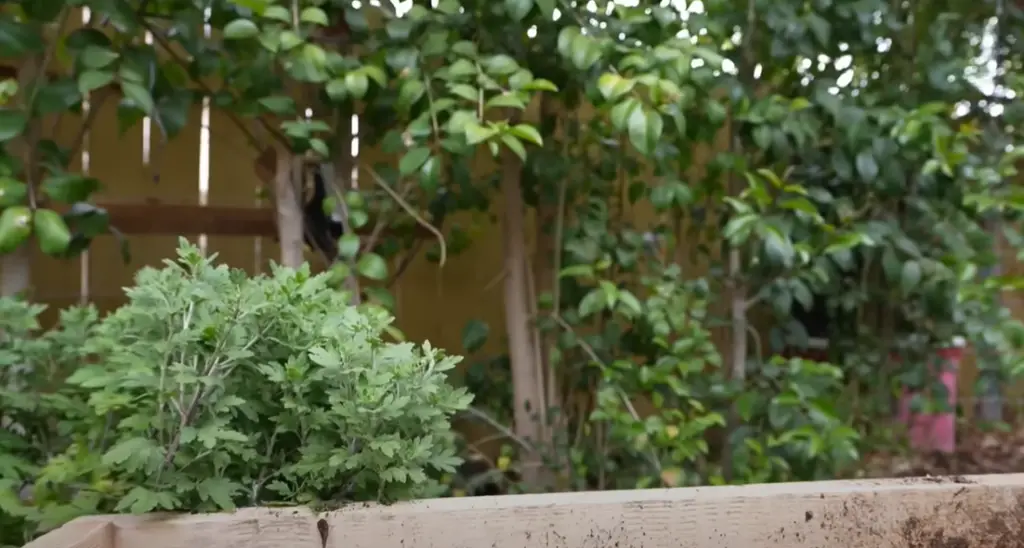
What is the average depth of a raised bed?
The average depth of a raised bed depends on the type of plants being grown and the soil conditions. Generally, a depth of 6-12 inches is optimal as it allows for ample space for root growth while providing an adequate reservoir for water and nutrients. Additionally, if you’re growing plants that require deeper root systems such as trees or shrubs, then a depth of 24 inches should be considered.
Is 20cm deep enough for a raised bed?
Yes, 20 cm is deep enough for a raised bed. This depth is sufficient for most plants and provides an adequate amount of space for root growth. However, if you’re growing plants that require deeper roots like trees or shrubs, then a deeper bed (at least 24 inches) should be considered. Additionally, the type of soil or planting mix you use may also impact the necessary depth of the bed.
Useful Video: Q & A: How Deep is the Soil in Your Raised Beds?
Conclusion
The depth of raised garden beds does not necessarily determine the success of a garden, nor does it guarantee that plants will be healthy and productive. It is important to consider factors such as soil type, water availability, plant selection, and climate when determining how deep garden beds should be. Plant roots need oxygen and drainage to thrive; however, the environment in which a particular garden is located should help dictate the ideal depth for raised beds. When designed properly with this information in mind, shallow or deep-raised garden beds can both be effective and beneficial ways to grow fresh produce.
References:
- https://www.finegardening.com/article/the-benefits-of-raised-garden-beds
- https://savvygardening.com/how-deep-should-a-raised-garden-bed-be/
- https://vegogarden.com/blogs/articles/how-deep-should-raised-garden-beds-be
- https://extension.unh.edu/blog/2019/03/what-are-benefits-raised-beds-how-can-i-construct-one-myself










Leave a Reply
View Comments